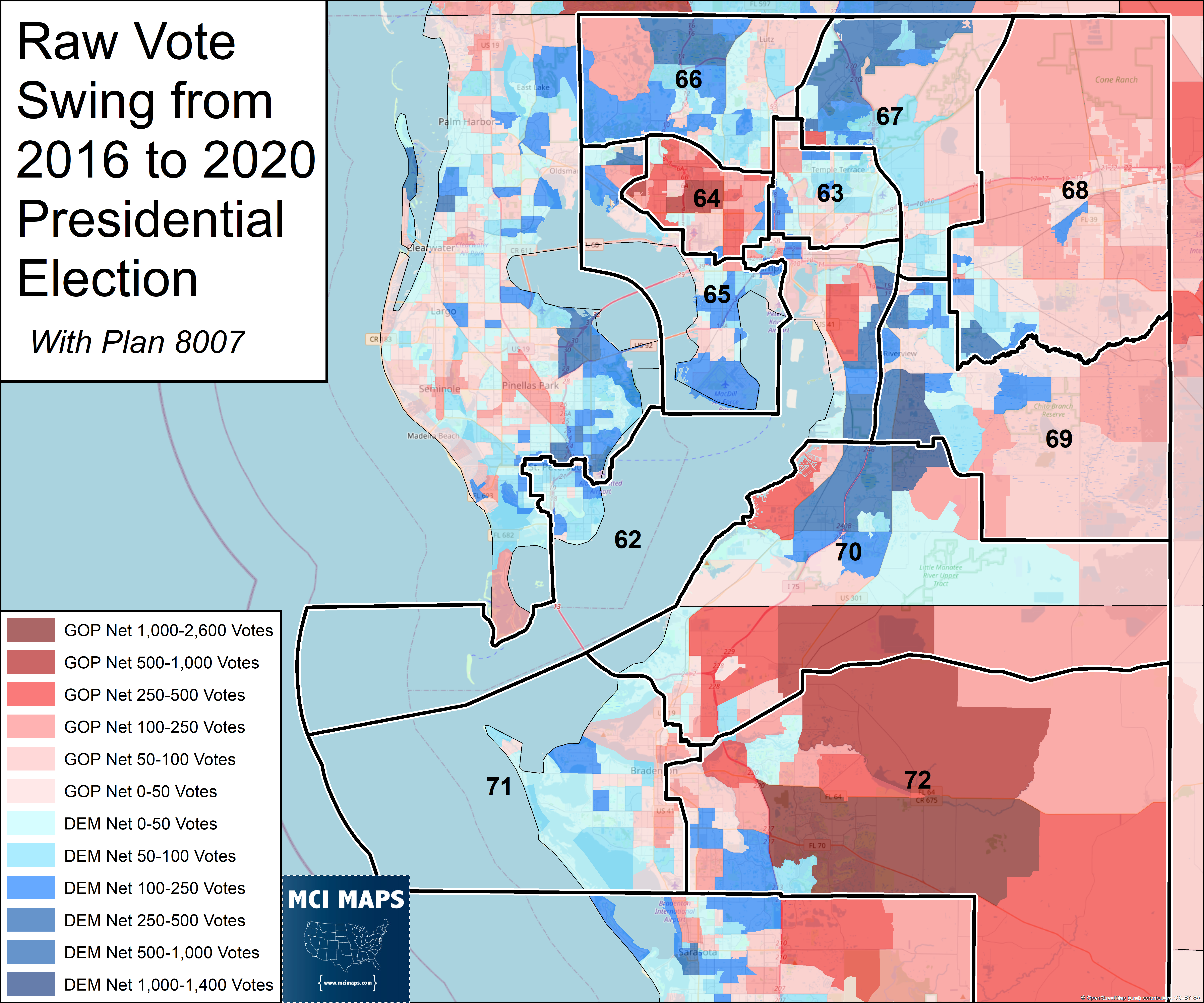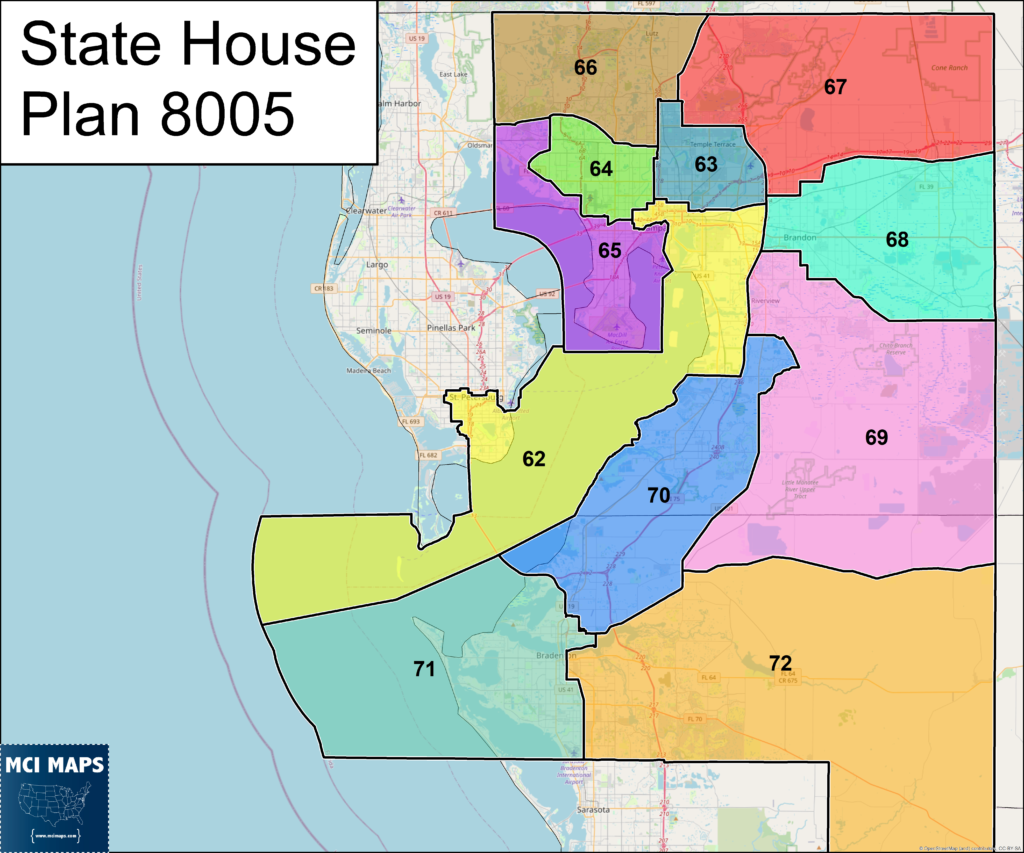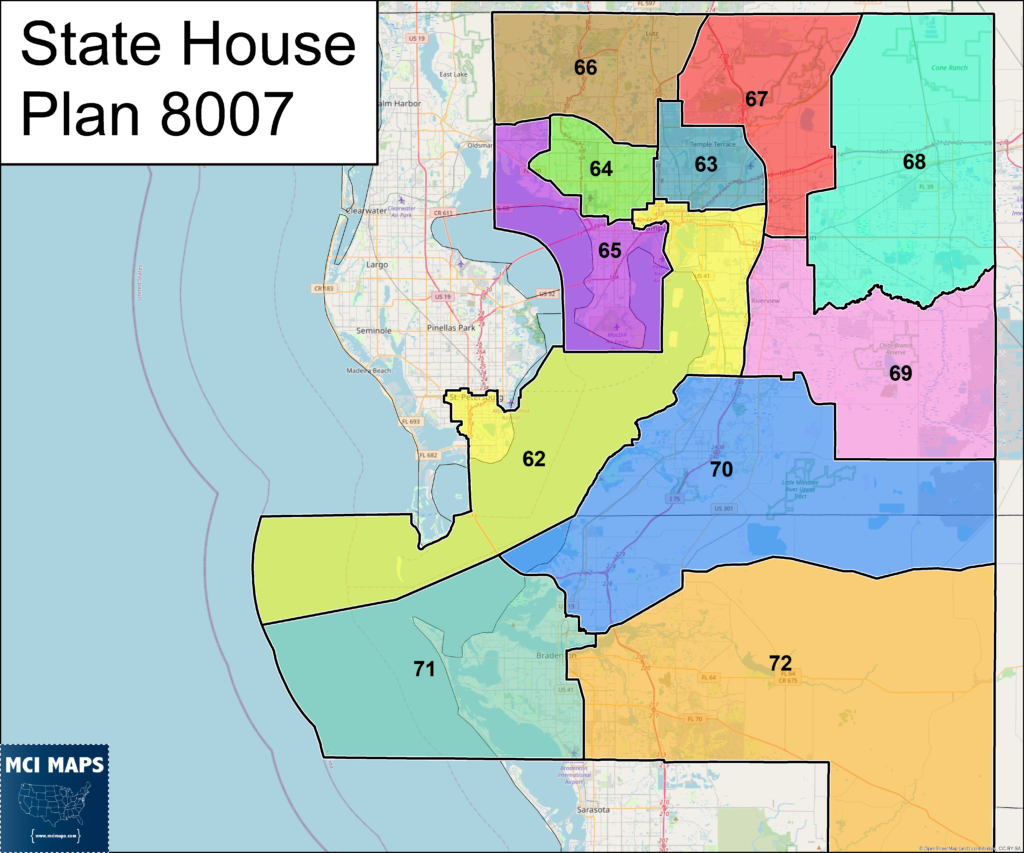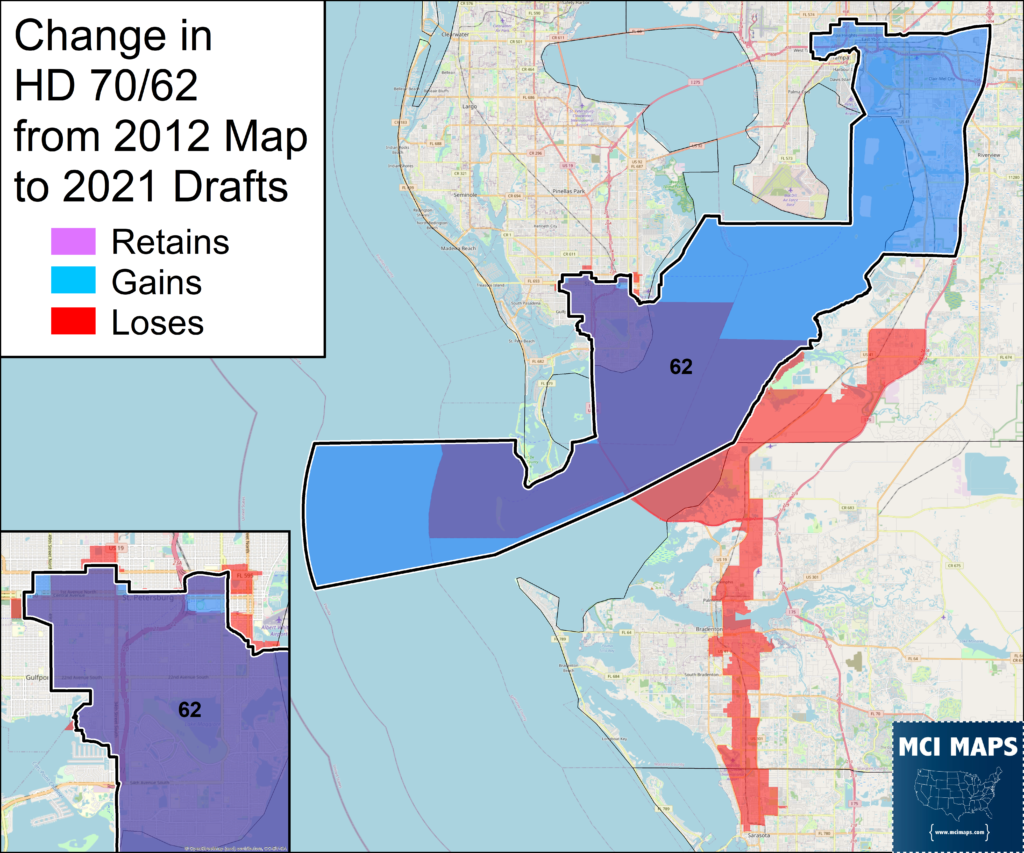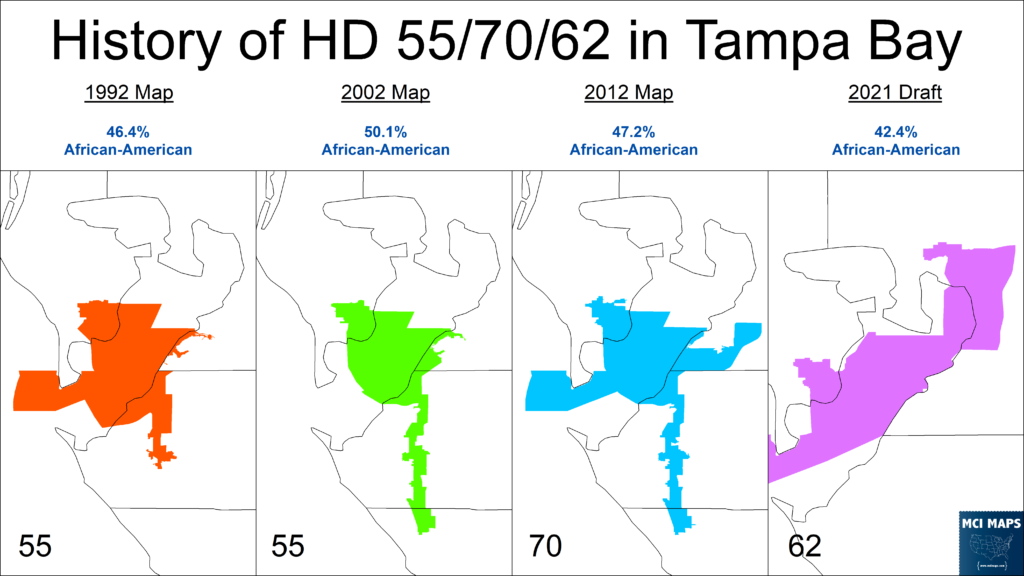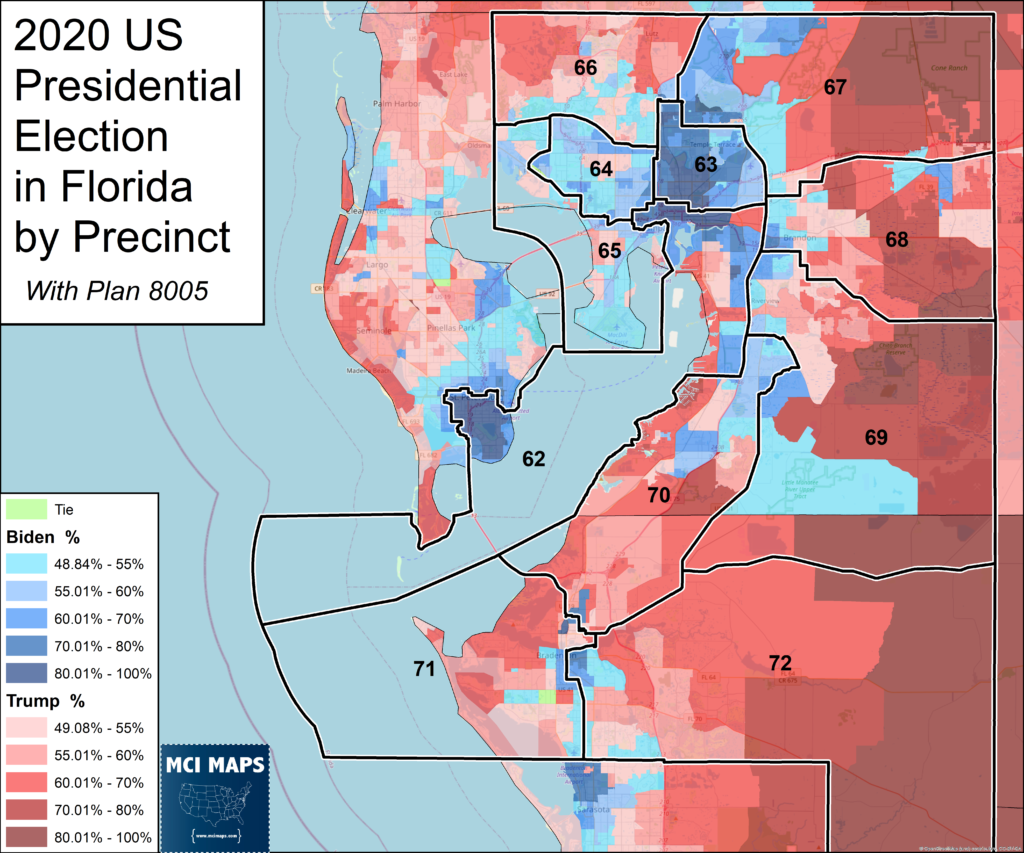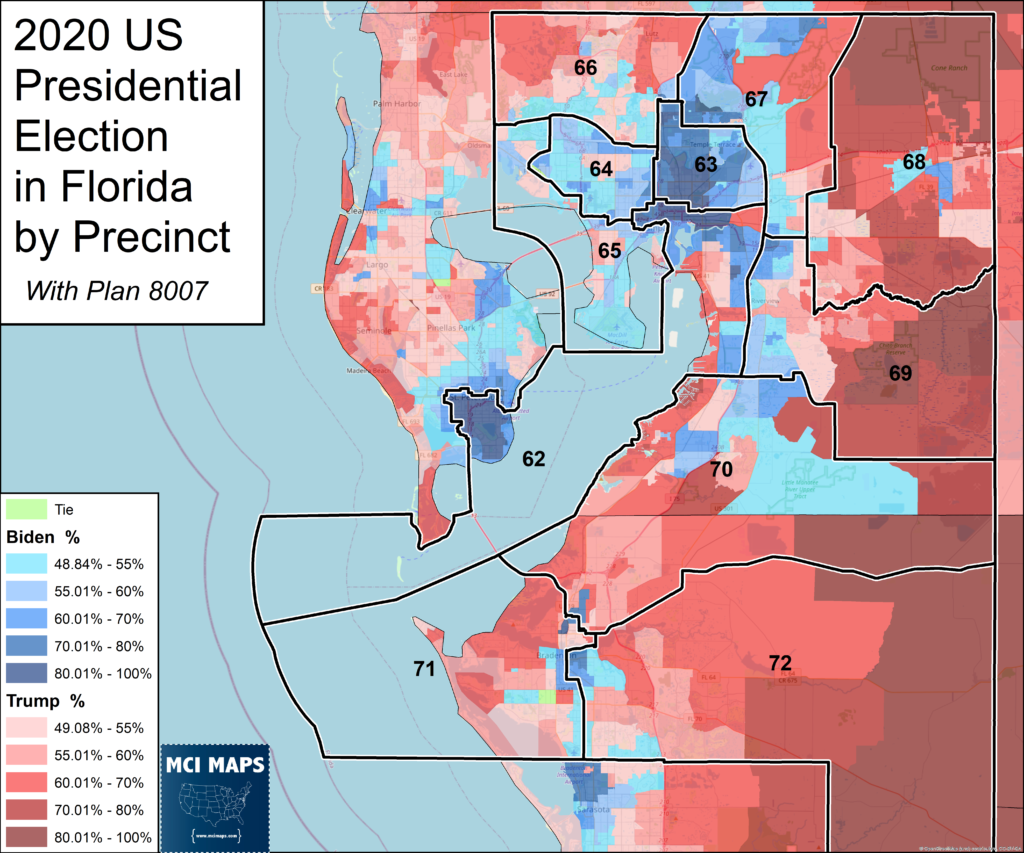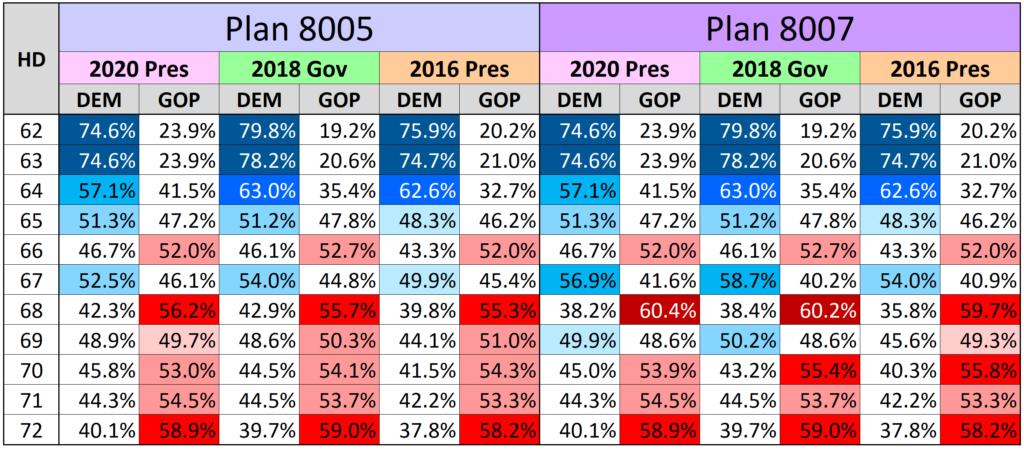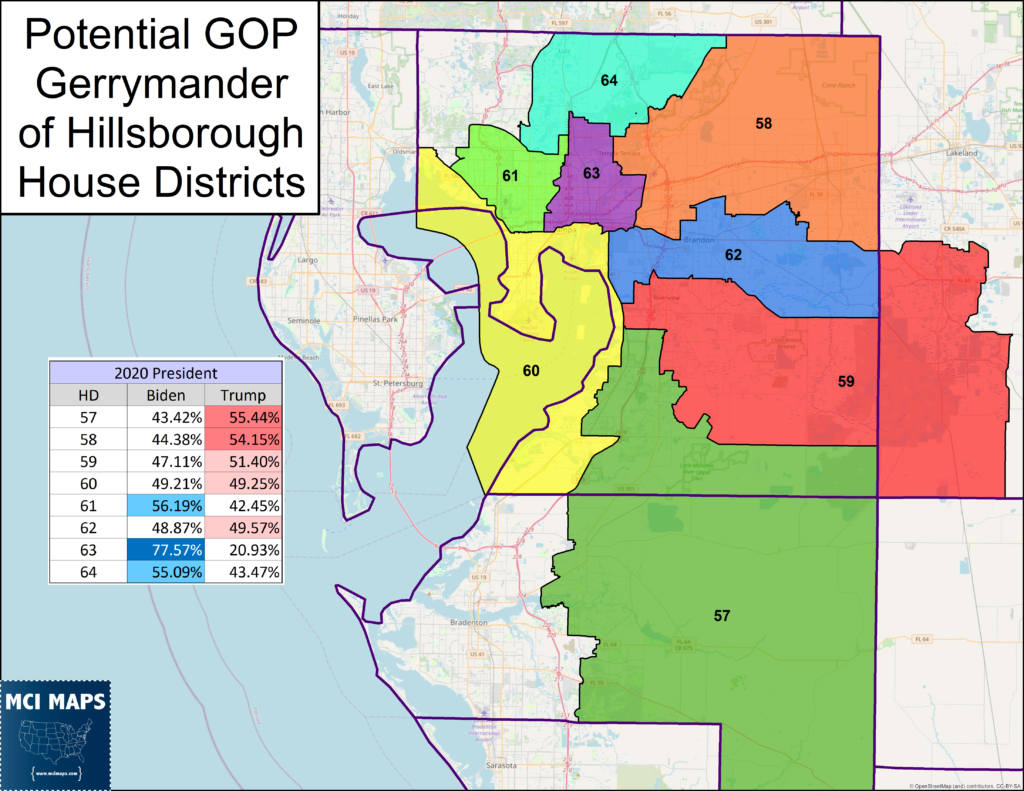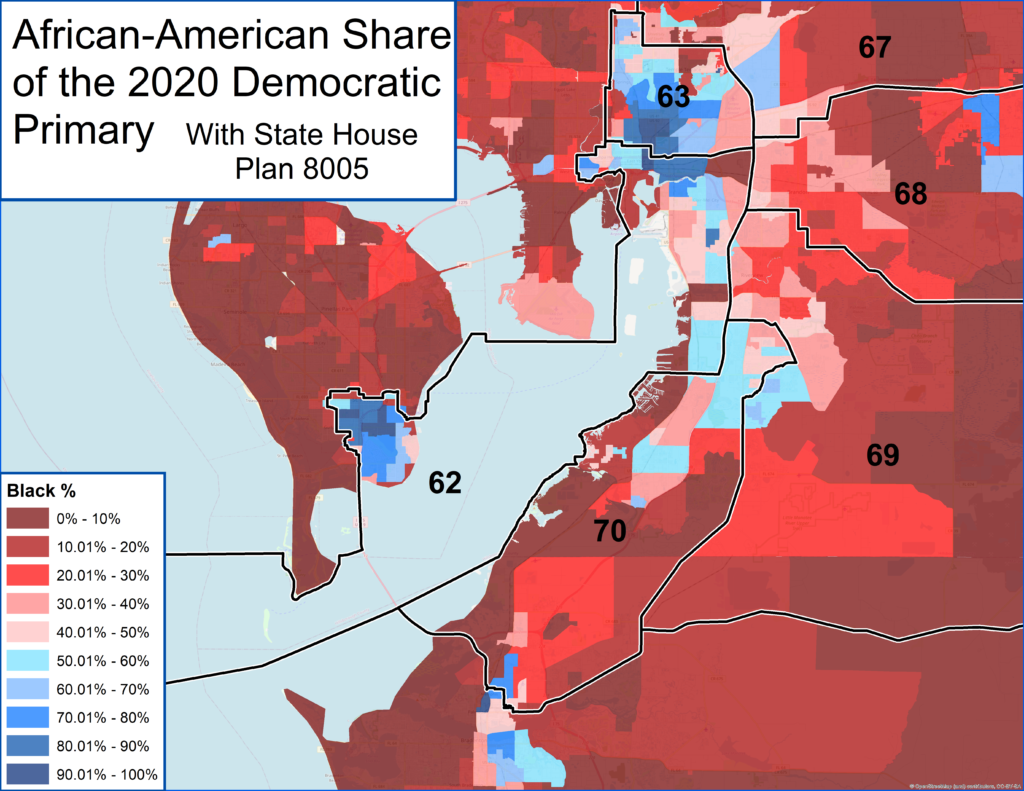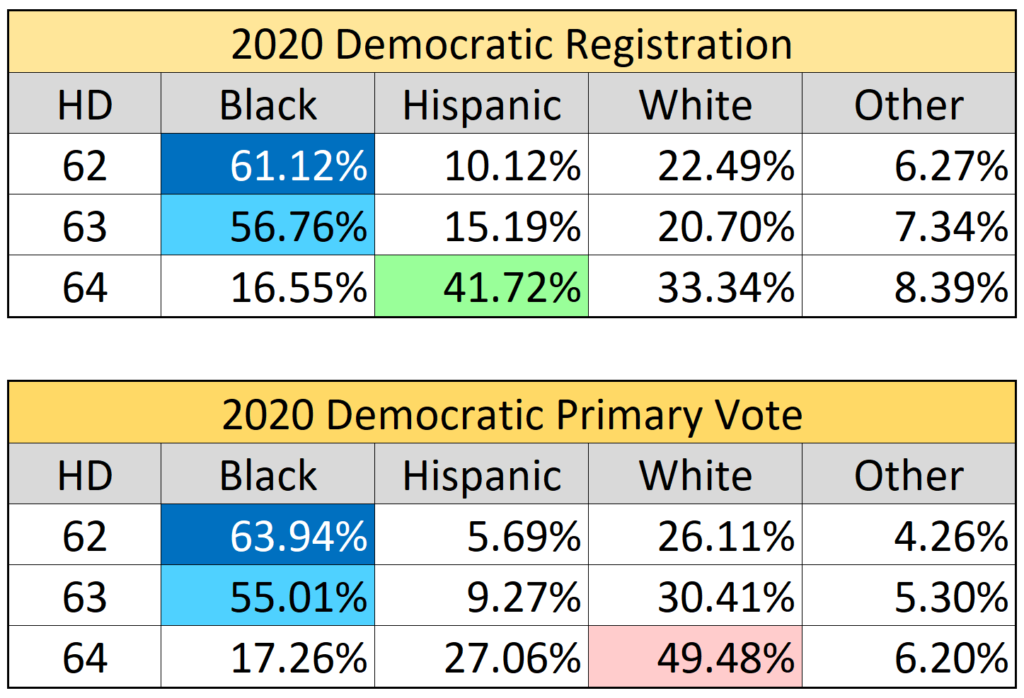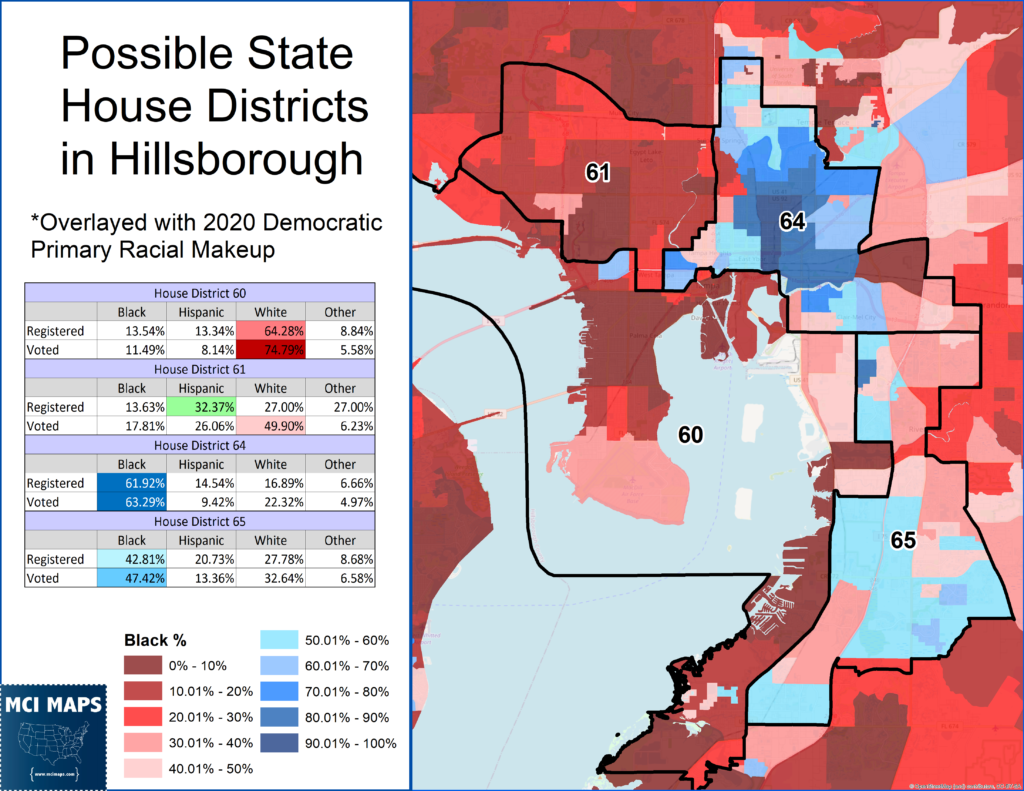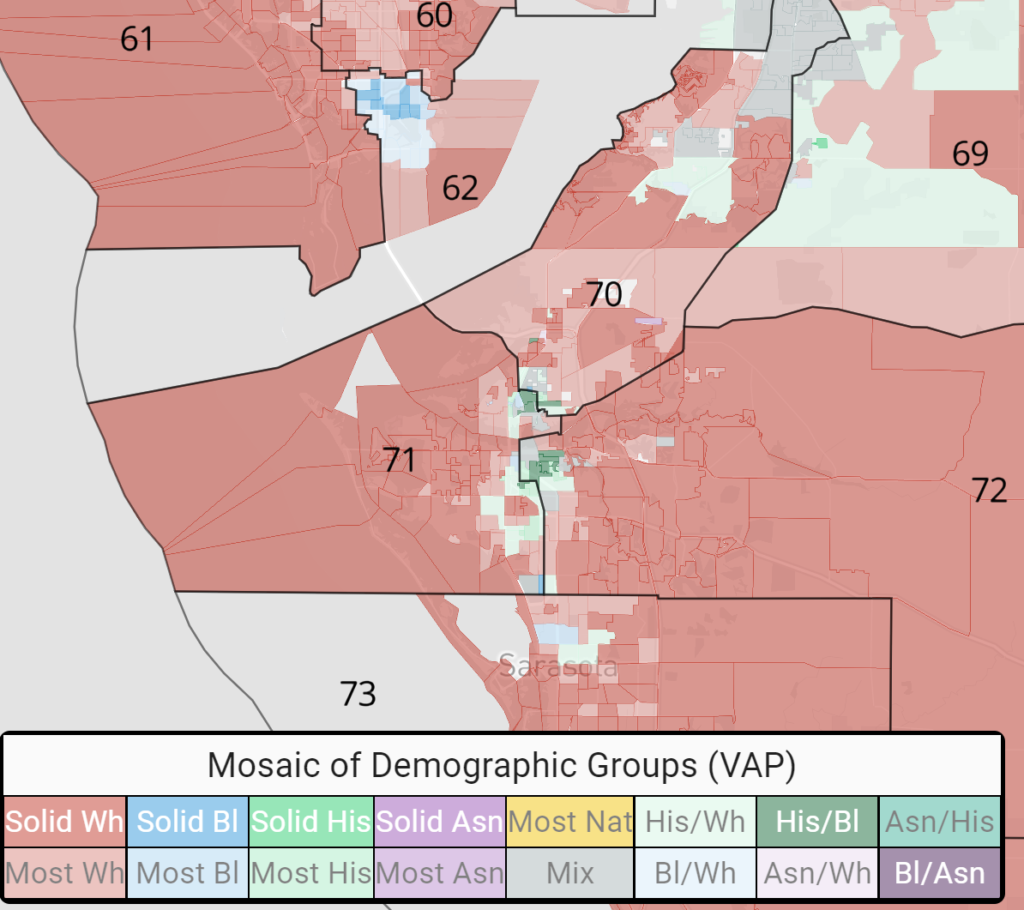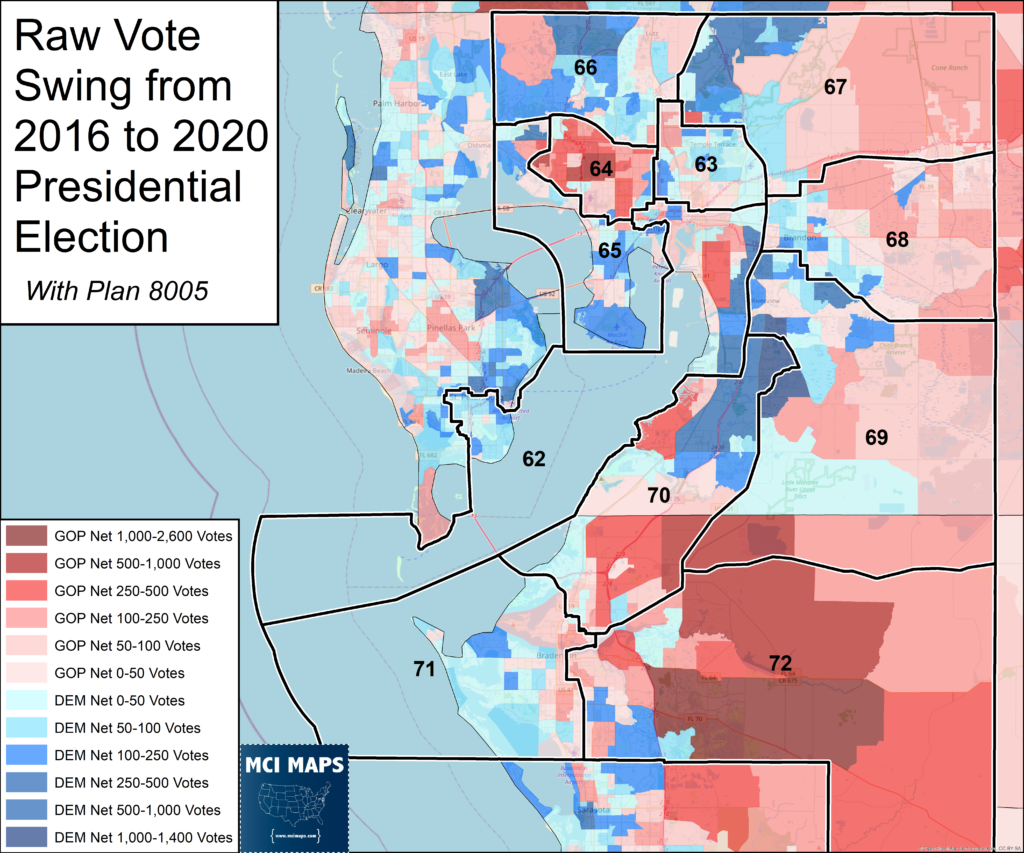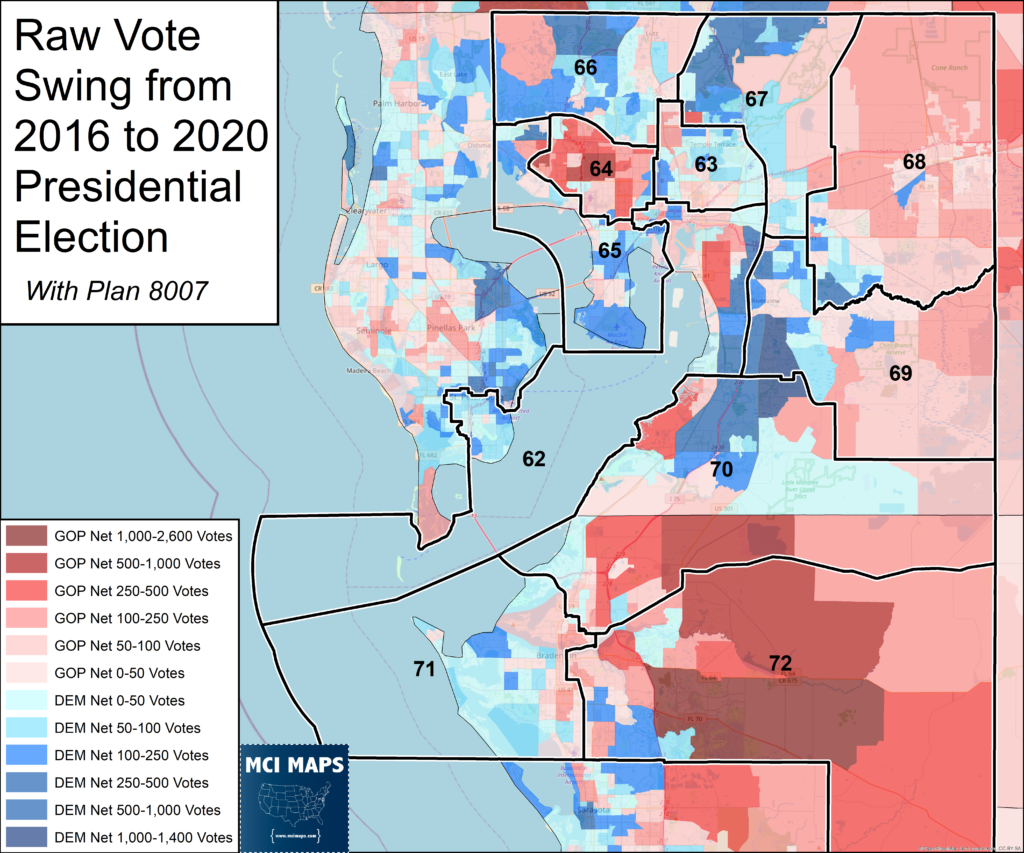This week marks article #9 in my series on redistricting possibilities across Florida. Each week I will look at an area of Florida to discuss redistricting implication.
Series Explainer
The goal of this series is to take a look at different areas in Florida and see how the legislative lines may end up. These articles will focus on how lawmakers may draw districts to accommodate changing populations. I will talk about different areas, what mandates (namely minority representation) they have, and what might need to happen due to population changes. I will also, at times, examine what efforts to gerrymander a region will look like. After the 2012 gerrymandering was discovered by a Florida Court, I believe it is appropriate to treat legislative intent with some healthy skepticism. “Fair maps” can – at times – be in the eye of the beholder, but the goal will be to identify what would likely be partisan decisions by lawmakers.
I highly recommending reading my History of Florida Redistricting series – as many mandates and norms we have in our maps are a product of that history. Prerequisite reading is absolutely my 2022 Primer Article – which covers which districts are under-populated and what the racial benchmarks are.
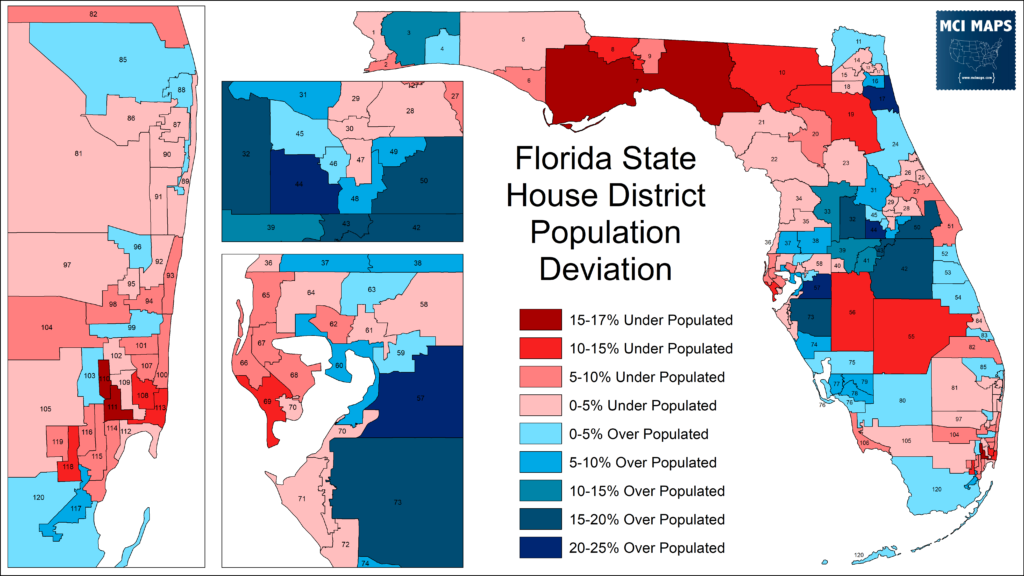

The full spreadsheet of district stats – including population and racial makeup – can be found here.
An important glossary to remember:
- BVAP = Black Voting-Age population
- HVAP = Hispanic Voting-Age Population
- Functional Analysis = using political turnout data to confirm minority performance in a district. Utilizing both general election and primary election performance for parties and racial groups.
Lets continue this series by looking at the southeast Florida state senate region!
Update! State House Maps Released
Over the last few weeks, we started seeing redistricting drafts emerge from the state senate. On November 29th, the State House released their first draft maps. I discussed the gerrymandering of the Congressional map in this substack post. For this article, we are discussing the state house plans.
Both plans give the GOP a decent advantage in the chamber. Biden won just 50/120 districts in plan 8005, while he got 52/120 in plan 8007.
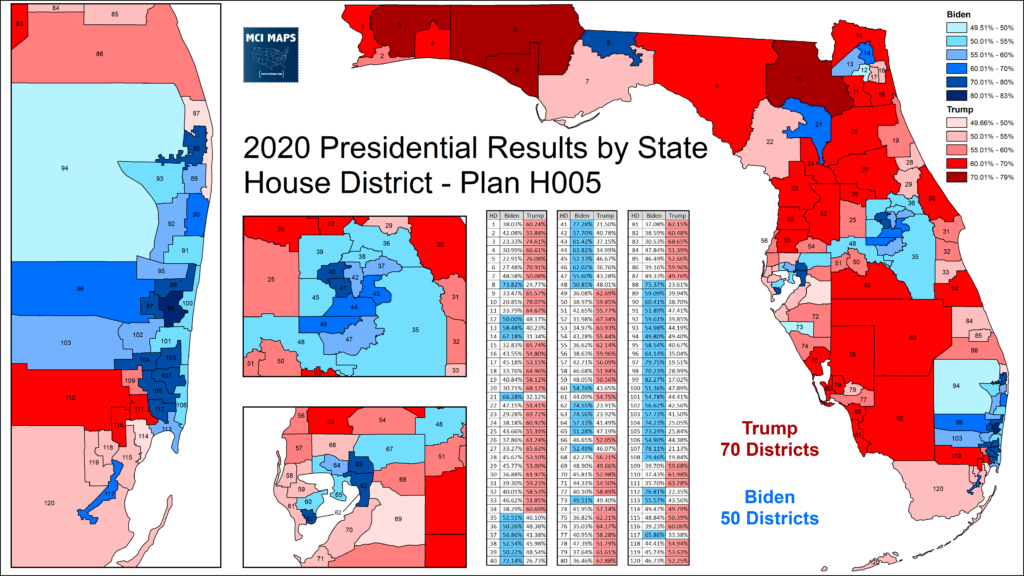
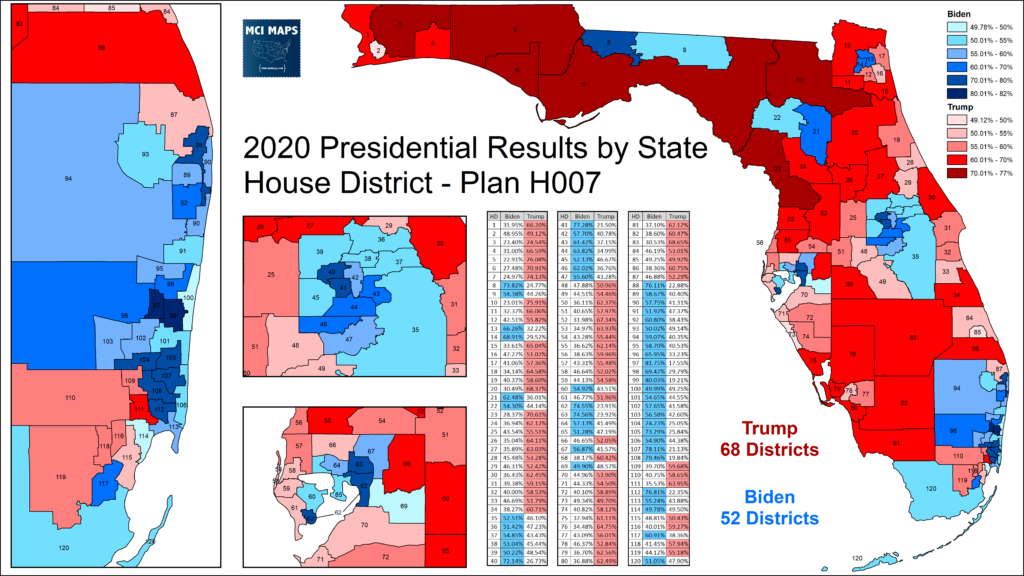
Biden did especially poor due to his collapse with Hispanic voters. In the races for Governor and Senator from 2018, the breakdowns were closer.
The plans do give Republicans key advantages, namely with Democrats winning several very narrow races while the GOP has fewer “at risk” seats. Democrats do get new districts, especially around Orlando, thanks to the massive population growth in the region.
Plan 8005 is a more aggressive plan in different parts of the state; though there is some trade-off in different regions. I will be going through multiple regions of the state over multiple articles; examining what these drafts (and any future drafts) are doing.
This article will cover the plans for the Tampa region.
A Look at the Tampa Area House Districts
This article will focus on the state house district drafts for the Tampa Bay region of the state. The specific focus is on the Hillsborough and Manatee county districts; where there is reason to believe partisan motives are guiding the lines.
Both plan layouts are below.
Both plans have the same lines for HD’s 62, 63, 64, 65, 66, 71, and 72. The primary debate between the two plans is over the eastern Hillsborough region. All the plans have three minority-performing districts:
- HD62: A 43% black voting-age population district. It is heavily Democratic and has a majority-black Democratic primary.
- HD63: A 43% black voting-age population district. Similar to HD-62, this district is heavily DEM with a diverse primary that is very likely to perform for African-Americans.
- HD64: A 57% Hispanic voting-age population district. It is steadily Democratic with a plurality of registered Democrats as Hispanic. Though turnout issues gives white voters the largest voting block. It has historically elected Hispanics and its diversity is growing.
The New Bay-Crossing District
For those of you familiar with Tampa Bay’s historic house districts, you will have no doubt noticed a major change. In a November article, I covered the history of HD-70, the African-American district that stretched from St Pete to Sarasota. I defended that seat, as odd as it looked, as a steady minority-performing district. Well this year all the drafts end the St Pete to Sarasota lines. The new HD-62 is the successor, but it goes from St Pete to southern Tampa.
This is a major deviation from the history of the district. You can see how the progression of the district has gone over time. Its 2012 borders were similar to 2002. The 2021 drafts see a major shift.
I touched on some of the partisan back-and-forth about HD-70 in my November article. Many Democrats claimed the lines were designed to prevent a democratic district in Sarasota. I came to the conclusion that going into Sarasota was likely a needed and acceptable task. In that same article, I talked about the growth in the diverse, and democratic, suburbs along I-75 south of Tampa. I wondered how Republicans might try to crack or pack Democrats to stave off losses.
Gerrymandering Tampa
Well, it appears to me that the map makers have used this new HD-62 to pack a good chunk of Hillsborough’s Democrats into an already blue district. Between that packing maneuver, and some careful cracking, the lines just so happen to nicely cut up Democratic growth along I-75.
The partisan breakdown of these plans is below. These districts restrict Democrats to a few seats. Plan 8007’s biggest differences to 8005 is that it creates a deep-red 68 while allowing 67 to remain more solidly Democratic. Both plans have HD69 neck-and-neck.
What you really notice when looking at the district lines is just how efficiently it carves the Democratic I-75 corridor up. Plan 8005 follows a gerrymandering idea I brought up as a possibility in my November article.
The path there is simple, grab some of the I-75 Democrats, then pair them with deep-red rural eastern precincts. Then further south the Democratic block is dragged into red Manatee county. The drafts follow this formula; plus they have the packing I didn’t do. The one sacrifice Republicans make in these maps is the coastal Tampa seat ends up being more Dem-friendly, but not by a huge margin.
How the Lines Hurt Minority Voters
My firm believe is that this new version of HD-62 is designed to pack Democratic voters, NOT adhere to minority voter concerns. I’m sure the line from the GOP will be “oh its so compact” and “its a solid black-performing district.” This, however, doesn’t answer for the fact that the current HD70 could have easily been maintained – and that by this point the African-American voters of St Pete and the corridor down from Manatee to Sarasota had been part of the same district for 20 years.
The change would be more warranted if it was being done to create a new minority district. That is not the case however. African-American voters are likely contained in HD’s 62 and 63.
The district lines split up the other non-white primary precincts. As previously discussed, this map maintains the current status quo of two black-performing districts and a Hispanic-performing seat as well.
All thee of these seats are heavily Democratic.
A potential Third Black-Access District
This status quo map actually appears to go out of its way to stop the creation of a potential third minority-performing district. As I discussed in my Tampa Bay article, another diverse district could be drawn in the southern Hillsborough area. In the plan I drafted below, I drew a seat, HD65, that was solidly Democratic and almost 50% black in a primary. Moving lines around more could increase that. And considering the growth in the area is diverse, the district very likely would continue to grow more diverse over the decade.
Of course drawing this would mean four solidly Democratic non-white districts instead of three.
Cutting up Manatee Non-White Voters
So if these house drafts are getting rid of HD-70s tale, which connected the non-white, largely black, voters down the I-75 corridor of Manatee County, what district are these voters now in? Well, for Manatee alone, they could be in any one of three districts.
Both state house drafts have the same borders for Manatee county districts; which cut the non-white population between three seats. While keeping these voters together would not be enough for a minority district, it is incredibly bad form considering this was a community that has been part of a minority district for decades.
A Possibly “Dummymander”
One question that does arise with these state house plans is whether or not they are a possible dummymander. For those unfamiliar, a dummymander is when a party tries to draw lines to gerrymander a region, but they instead accidently create a map that is worse for them than they expected. There are histories of both parties attempting gerrymanders that backfired. Sometimes its because personal interest of lawmakers played too big a role, or sometimes its a party overconfident and not seeing demographic/partisan change on the horizon.
The reason Hillsborough house districts are looked at as a potential dummymander are that they might be “too greedy.” The plans, especially 8005, aim to keep southeastern Hillsborough red. The biggest issues revolve around districts 69 and 70.
- In plan 8005, 69 is Trump +1 and 70 is Trump +7%
- In plan 8007, 69 is Biden +1, and 70 is Trump +9%
However, compared to 2016’s elections, this is notable Democratic swing
- 8005 – District 69 got 6% more Democratic, 70 got 5.5% more Democratic
- 8007 – District 69 got 5% more Democratic, 70 got 6.6% more Democratic
Part of this swing was voters flipping from 2020; a common sight in many of the suburbs. However, another major factor is the large growth in the region over recent years. This area saw some of the largest growth in votes cast from 2016 to 2020; something I covered here.
Below is the precinct-level swing from 2016 to 2020. Note, however, this isn’t the % swing. This is raw vote swing. Deep blue means more net votes for the Democratic Presidential nominee.
The lines around districts 69, 62, and 70 really work to divide up the large blocks of Democratic growth in the southern Hillsborough corridor. However, this is a risk for Republicans with 70 and 69. If the trends continue (and as we all know, there is no guarantee they will) – Democrats could push well past Republicans as the decade moves on. One of the districts is already tied, the other has rapidly moved into single-digits (similar story in both plans).
Arguably for Republicans, using the plan I offered earlier, where I create a potential third black-access district, would be the safer route. Trying to pack the diverse, democratic, suburban growth along I-75 would better insulate the rest of the districts. Instead of sacrificing one seat, they risk long-term losing two. They be fine in 2022 as that midterm is likely to be red, but 2024 and onward are less certain.
Conclusion
First glance of the Tampa House districts gave me pause. Further analysis tells me that either 1) These lines are gerrymandered or 2) These are the luckiest lines the Florida GOP could have hoped for.
Whether they will regret these lines later remains to be seen.

